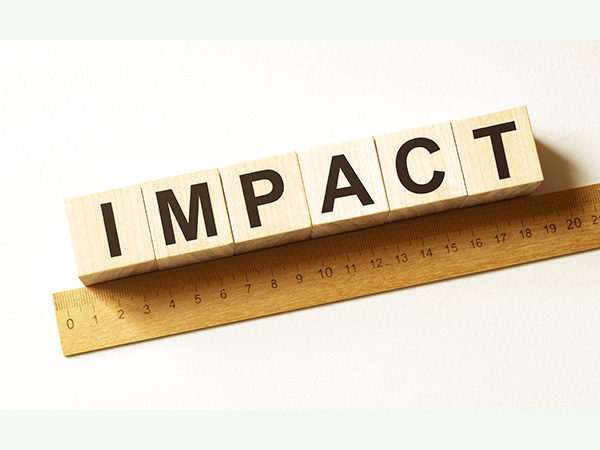Navigating the complex world of impact measurement

There is a saying that if you can’t measure it then it doesn’t exist. Many a quantitative analyst or impact investing sceptic, will throw this at you if you work in this space. As a scientist by training, I love numbers BUT not everything is designed to be measured (for example, love) and things that are able to be measured, can often be quite complex given the interconnected nature of the world we live in. This is all before we factor in the paucity of quality data available to help us understand our impacts and what we can legitimately claim. It is also notwithstanding the difference between impact, value, outputs and outcomes.
However, what can be measured should be measured. On an individual investment basis this becomes easier as investors can set the terms of the engagement and work with the end investee to define the measures of success for that transaction/relationship. When we aggregate to a portfolio level, with potentially hundreds of investments, this becomes incredibly complex. Private market impact measurement is often easier than public markets. We believe, given the complexities with impact measurement, investors should start with firstly understanding both the likelihood of impact and type of impact, given impact is multi-faceted.
We have a three by three matrix at Tribe developed specifically for this purpose. We look at three proxies for breadth and type of impact, and three measures for quality and depth. The first three are a company’s ESG rating, recognising that there is an embedded impact that can be achieved through effective operational management (take supply chain as an example; working with your suppliers to improve workplace conditions and pay yields significant social benefit). We then look at controversies; it becomes difficult to maintain confidence in a business’s ability to manage social, environmental and economic risk if it moves from one controversy to the next. Finally, and most importantly, we look at product revenue, focusing on those products that materially align to the United Nations Sustainable Development Goals (UN SDGs) and play an active role in creating the future we all need. We believe this is an imperfect measure though and this is where the next matrix helps us navigate the quality and depth of impact.
Supporting the first three measures of E, S and G, we then focus on
- Additionality;
- Materiality; and
- Intentionality of both business and product.
Understanding how additive the business and/or product is to a sustainable future (
Additionality
So we use our three by three matrix to help us find some of the best impact opportunities but how do we measure the impact of those opportunities? It’s not without its challenges. Recently we’ve witnessed the rise of impact calculators in the market; a favoured tool with some, which may use phrases like “£1m invested will save X litres of water, or create X number of jobs”. We are not entirely comfortable reporting impact using these measures. There are two reasons for this; first, we feel the tool itself can offer some valuable insights but often the data is not contextualised so the reader has no view as to whether this is material in impact or not. For example, 50 jobs created sounds wonderful but are these jobs with dignity? Are they seasonal jobs? Are they contract roles? Is this a net figure taking into account jobs removed? Also, what coverage of the portfolio does this relate to. Second, the measures reported are not impact measures, but output measures. For example, the number of jobs created is simply a measure of volume, not quality or outcome of those jobs. We’ve all seen the issues within work poverty, so new jobs without dignity or below minimum living wage isn’t as good as it sounds. To really understand the impact and the value created we have to focus on outcomes and be clear in what we report and the methodologies we use.
The issues above often stem from a lack of clarity as to what investors are trying to achieve in terms of their investment selection and/or portfolio hypothesis. Highly thematic investing (e.g.issue specific; gender, low carbon, sustainable agriculture etc) enables the investor to be clear as to the theory of change and the measures that can be used to confirm or deny that the change required has happened. Multi-themed portfolios and the use of fund investments, as opposed to
Direct investment
Equity
This doesn’t mean that we shouldn’t measure. But it is why we’ve been reticent to report on measures we feel at best are unintentionally erroneous and at worst very misleading. This feels especially important now given the call for government fiscal support for businesses being tied to
Sustainability
So how can we more accurately measure impact? It’s clear we need more consistent reporting from companies on universally agreed measures that help us understand whether businesses are additive or detractive to a sustainable future. These measures also need to take into account variation in
Materiality
We have common standards on financial reporting, should we move to common standards on
Sustainability
Intentionality
Those of us who use the UN SDGs as the compass through which we define a sustainable future, need to be willing to accept that it is a public policy framework and, therefore, requires some level of translation as an investment compass. Global Reporting Initiative (GRI), the UN Global Compact (UNGC) and the World Business Council for Sustainable Development (WBCSD)’s SDG Compass has gone some way to translate this into an investment tool but it hasn’t gone far enough. There are many other initiatives out there that are starting to push to form the fabric for a more universally agreed set of metrics and methodologies/processes that can help us and our investors confirm what impacts we are truly having.
We are, however, for now, operating in a world where impact measurement and reporting is complex. We have to be comfortable with that and not fall foul of the fear that if we can’t report all of the impact, then it’s not happening. After all, I can measure who reads this post but I can’t measure, yet, what impact it is having. But I know that by reading and learning and reflecting, we can all enhance and/or change our views and, therefore, behaviours – it’s difficult to measure but it happens. The more we work together and the more we can agree on what true impact metrics are, the better our collective impact will be. Until then, we must increase and improve the measuring we do to ensure likelihood of impact and type of impact, so measuring that impact will become easier. In time.




